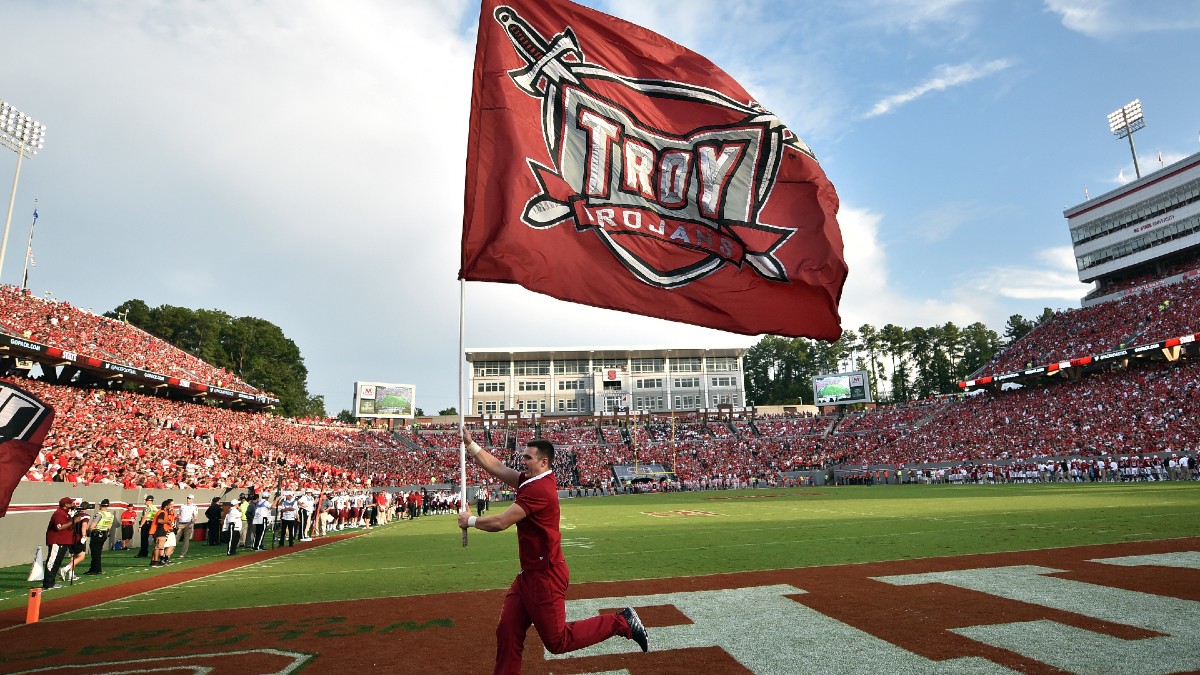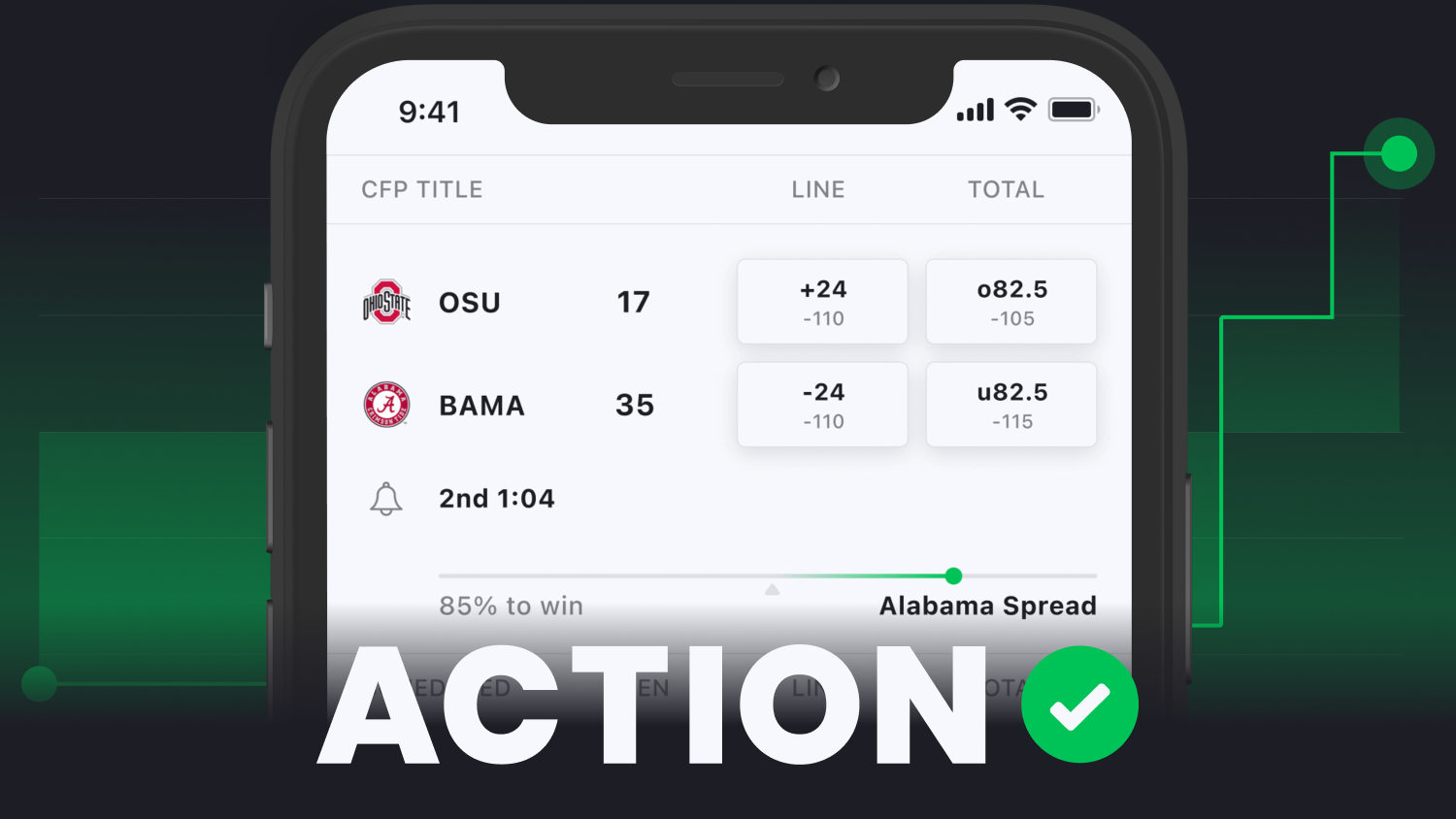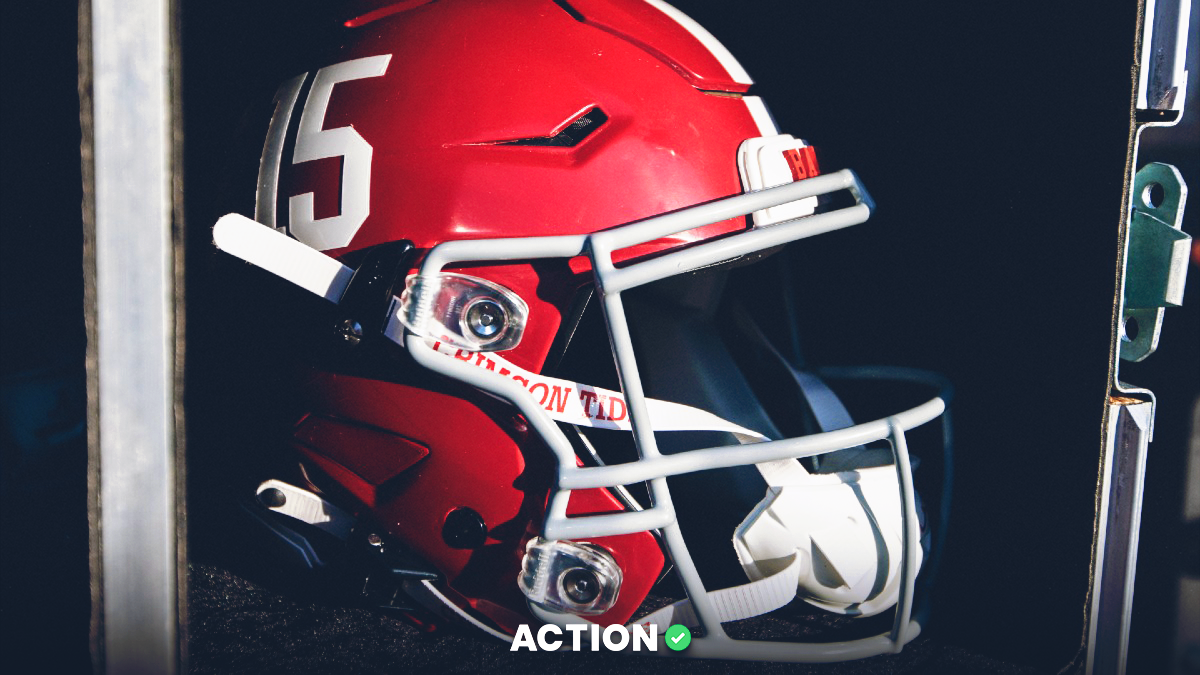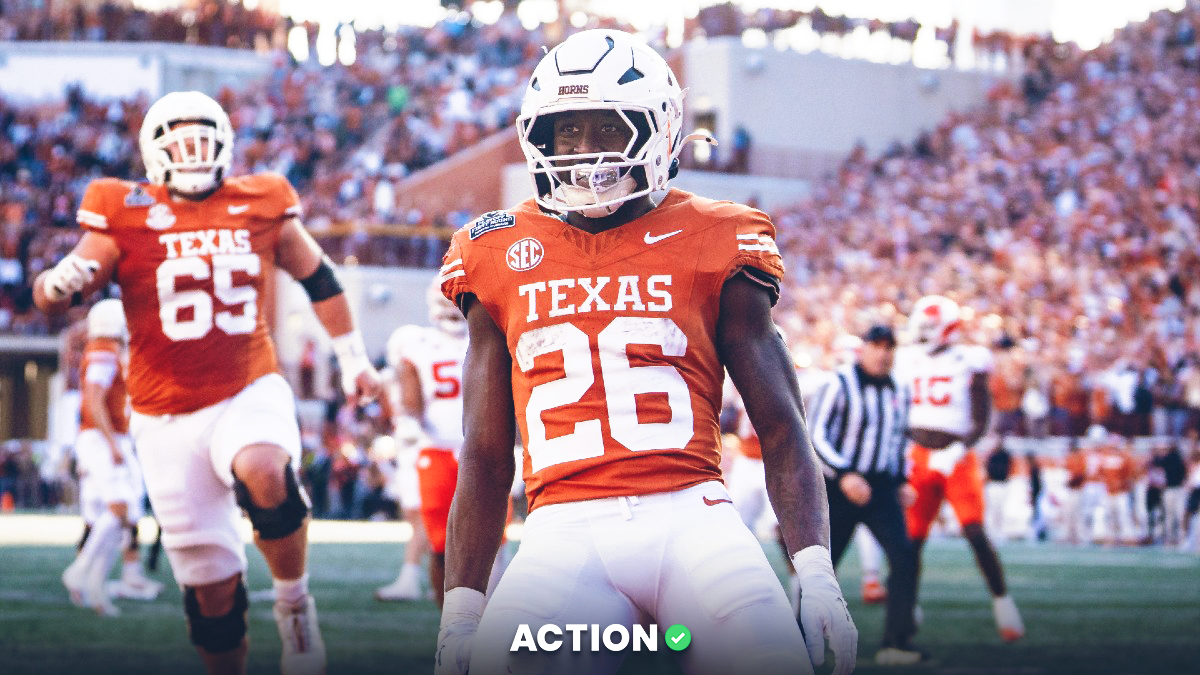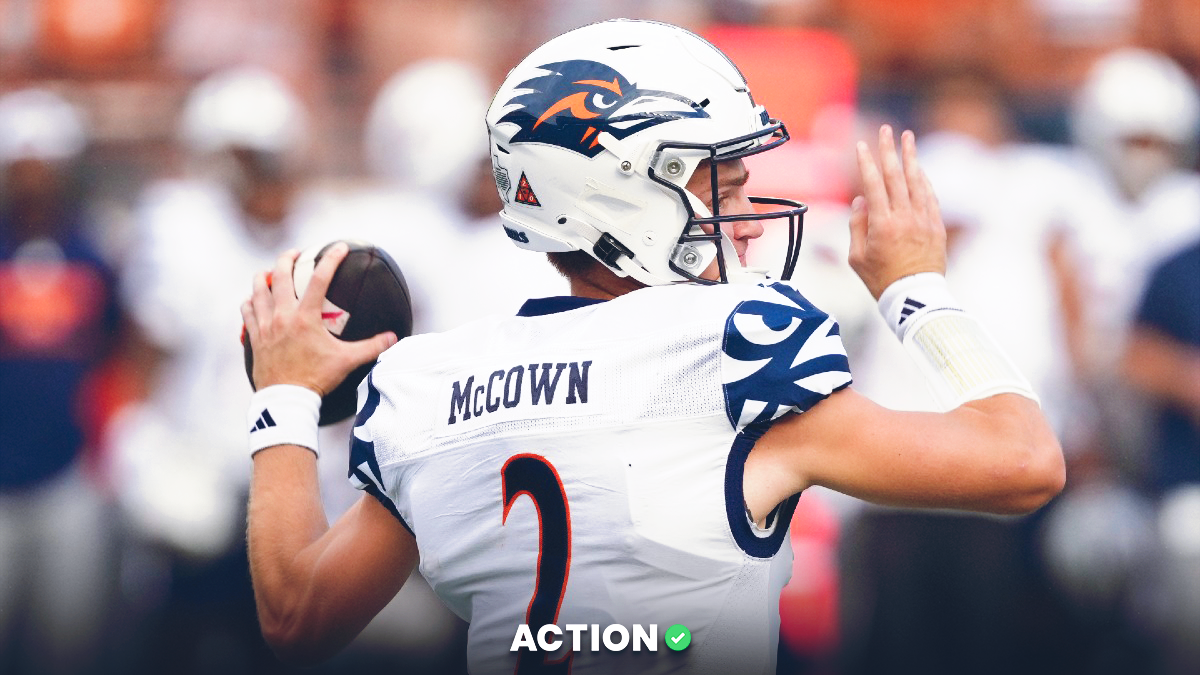Let's take a look at this quote from last week: "This is one of the most pathetic offensive matchups I have ever seen, to be completely honest."
This line ended up being true, as Charlotte and East Carolina sleepwalked their way through their game, en route to a 10-7 final score.
This brings us to 3-0 on the season, and it's time to take us to 4-0.
This breakdown looks at three metrics that have proven to be relevant to covering the spread:
If you're interested in why these metrics have been chosen, check out this piece by Collin Wilson. To quote his findings:
“Data from the past five years indicates defensive Success Rate, Havoc and Finishing Drives are the biggest indicators in beating oddsmakers this college football season.”
Let’s dive in and see where we can find an edge in Week 9.
Havoc
What is Havoc?
Havoc is a college football term defined as a play where there’s an unexpected outcome. Pass breakups, forced fumbles and tackles for loss are just a few of the plays that cause chaos on any given Saturday. Collectively, these plays are used to build an identity for a team.
The calculation for Havoc is simply a cumulative number of tackles for loss, interceptions, fumbles and passes defensed divided by the number of plays on both sides of the ball.
Let's see where we can find some big Havoc discrepancies in Week 9:
Home Team Havoc Allowed vs. Away Team Havoc Rate
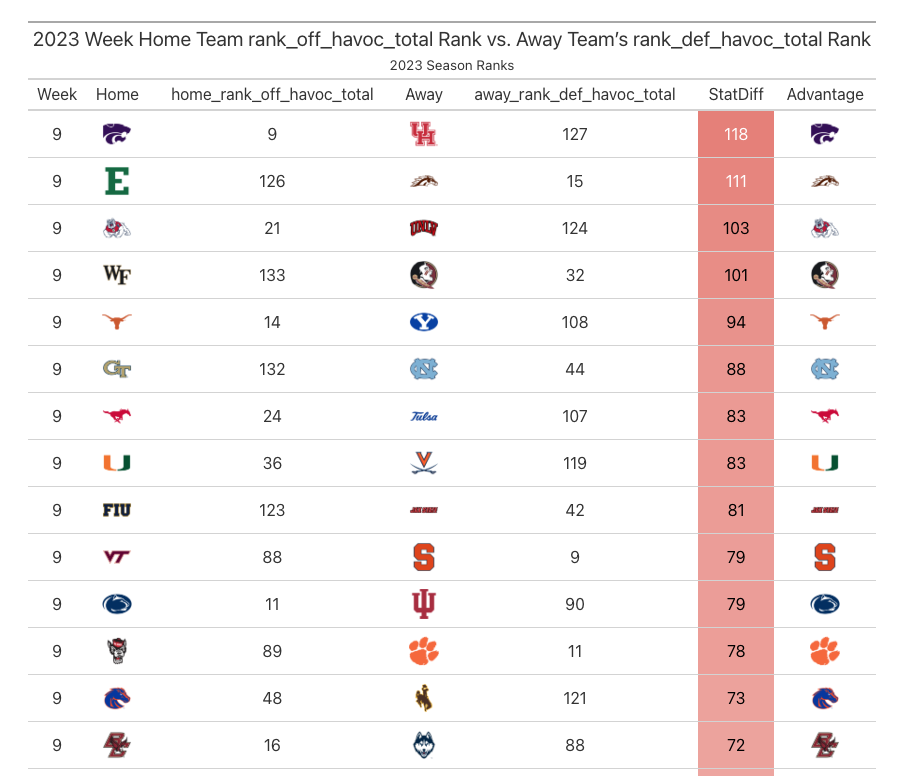
Top 3 Havoc Mismatches (Home Offense vs. Away Defense)
- Kansas State Offense vs. Houston Defense
- Western Michigan Defense vs. Eastern Michigan Offense
- Fresno State Offense vs. UNLV Defense
Away Team Havoc Allowed vs. Home Team Havoc Rate

Top 3 Havoc Mismatches (Away Offense vs. Home Defense)
- Ole Miss Defense vs. Vanderbilt Offense
- Texas A&M Defense vs. South Carolina Offense
- Maryland Offense vs. Northwestern Defense
Success Rate
What is Success Rate?
Success Rate is an advanced metric in football that measures efficiency but with the important context of down and distance considered.
A play is defined as successful if:
- It gains at least 50% of the yards required to move the chains on first down
- 70% of yards to gain on second down
- 100% of yards to gain on third or fourth down
To calculate Success Rate, simply divide the number of successful plays (as defined by down and distance above) by total plays.
This definition is taken from our article on Success Rate.
Home Team Offensive Success Rate vs. Away Team Defensive Success Rate
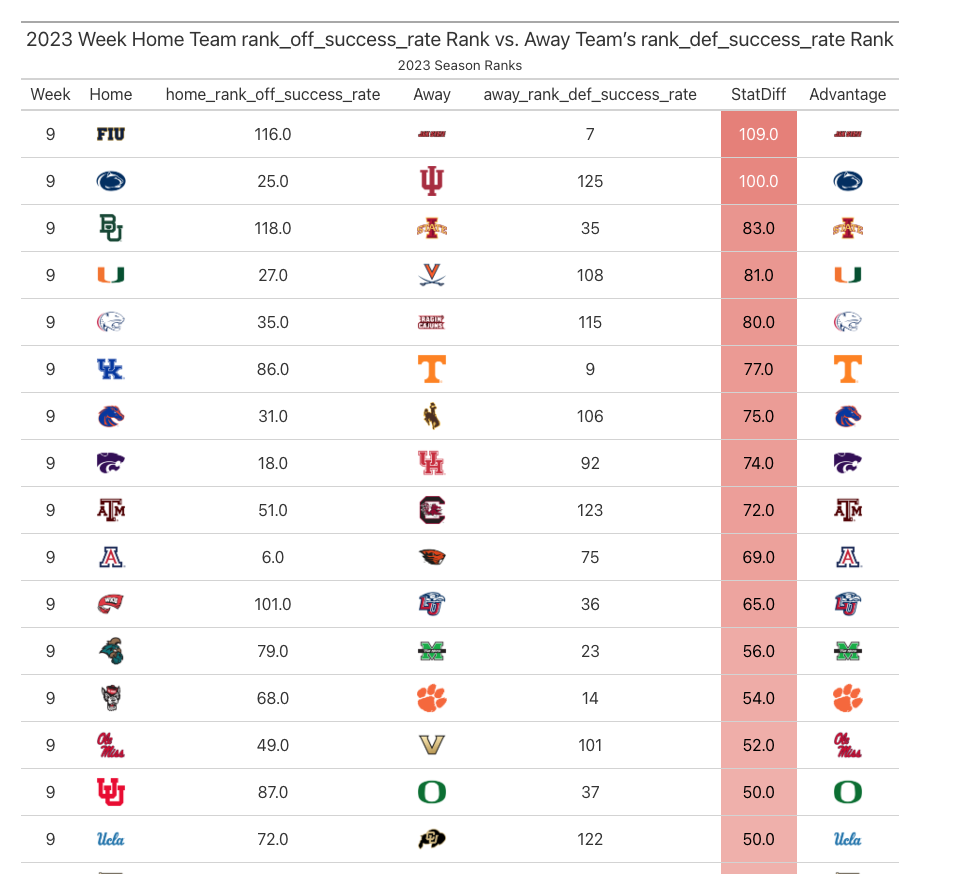
Top 3 Success Rate Mismatches (Home Offense vs. Away Defense)
- Jacksonville State Defense vs. Florida International Offense
- Penn State Offense vs. Indiana Defense
- Iowa State Defense vs. Baylor Offense
Away Team Offensive Success Rate vs. Home Team Defensive Success Rate

Top 3 Success Rate Mismatches (Away Offense vs. Home Defense)
- Washington Offense vs. Stanford Defense
- Oklahoma Offense vs. Stanford Defense
- Texas Defense vs. BYU Offense
Finishing Drives
What is Finishing Drives?
Finishing Drives is calculated as points per opportunity when the offense passes the opponent’s 40-yard line.
Defensively, this is how many Points per Opportunity a defense allows when the opposing offense crosses the 40-yard line.
Home Team Offensive Finishing Drives vs. Away Team Defensive Finishing Drives
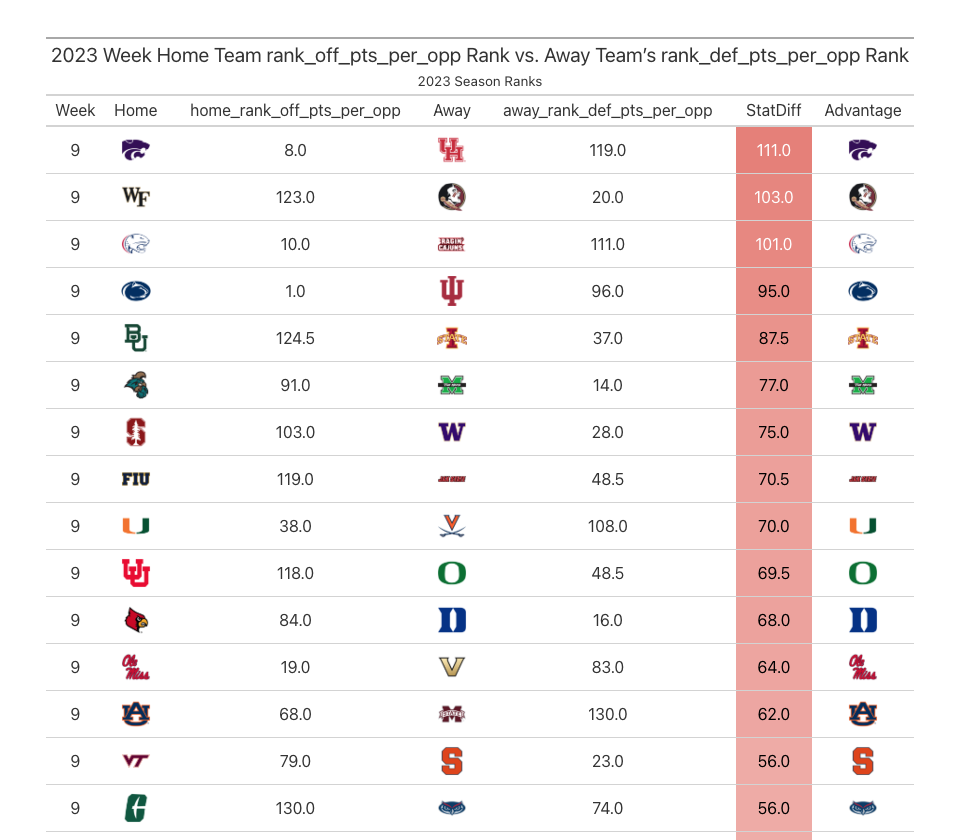
Top 3 Finishing Drives Mismatches (Home Offense vs. Away Defense)
- Kansas State Offense vs.Houston Defense
- Florida State Defense vs. Wake Forest Offense
- South Alabama Offense vs. Louisiana Defense
Away Team Offensive Finishing Drives vs. Home Team Defensive Finishing Drives
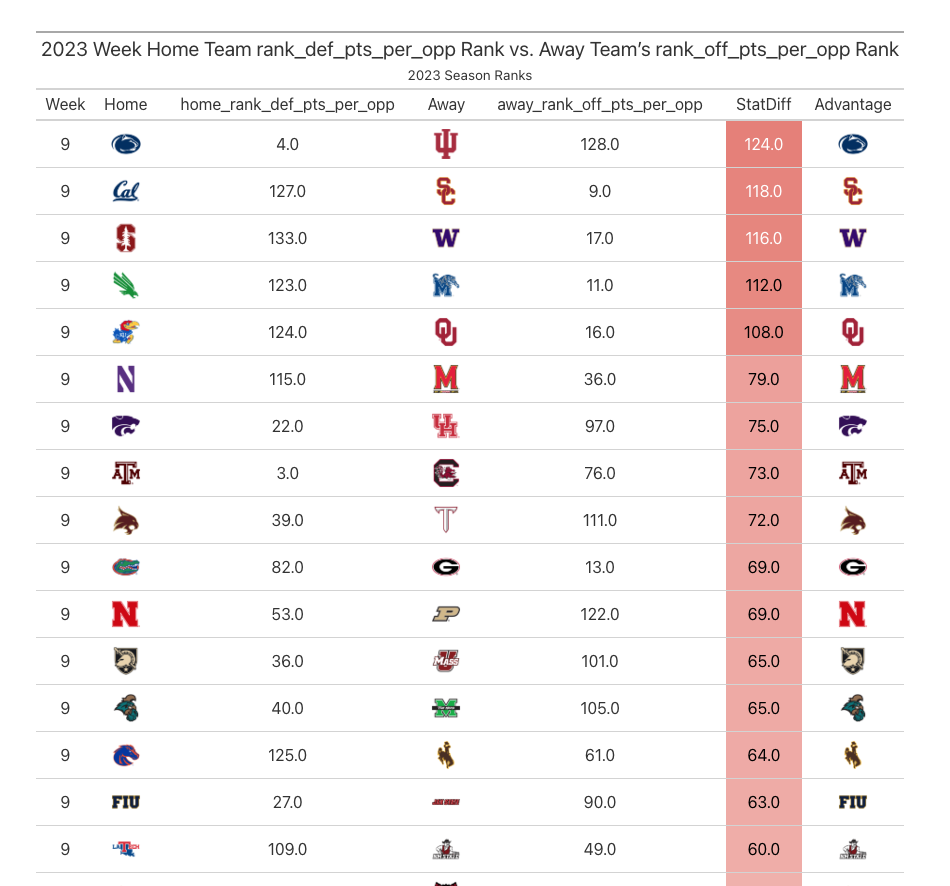
Top 3 Finishing Drives Mismatches (Away Offense vs. Home Defense)
- Penn State Offense vs. Indiana Defense
- USC Offense vs. Cal Defense
- Washington Offense vs. Stanford Defense
College Football Week 9 Betting Takeaways
Matchup Analysis
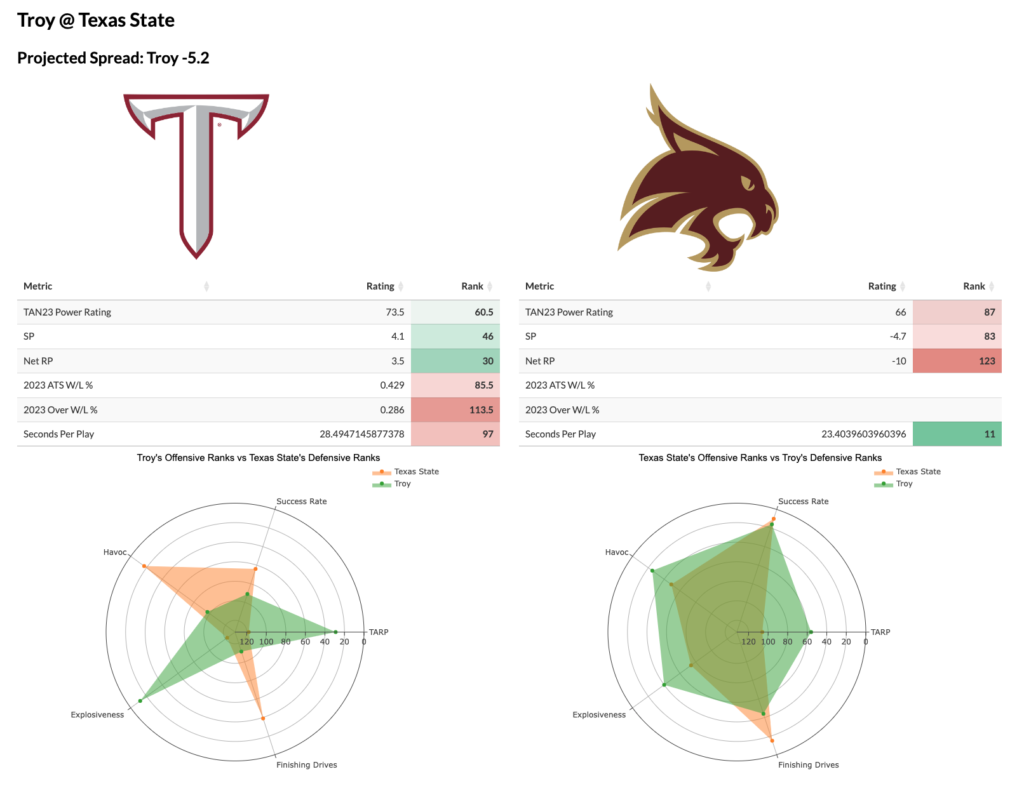
I think this game will be deceptively close and relatively low-scoring.
Troy is slow and methodical with the football, while it can stop teams on defense consistently.
Meanwhile, I think Texas State's defense will cause legitimate problems for Troy. The Bobcats have shown they can create chaos on defense with a total Havoc ranking of 17th. Troy is especially vulnerable in that regard, ranking 97th in Havoc Allowed.
In addition, Troy struggles to score touchdowns when it crosses its opponent's 40-yard line, ranking 111th in Points per Opportunity. On the other side, Texas State is above average on defense, ranking 40th in Points per Opportunity Allowed.
Texas State actually has a good offense, ranking in the top 20 of both Success Rate and Finishing Drives.
I think Troy settling for field goals will hurt it over the long run and drive this total under.
Get in on the college football action with our PointsBet promo code.


